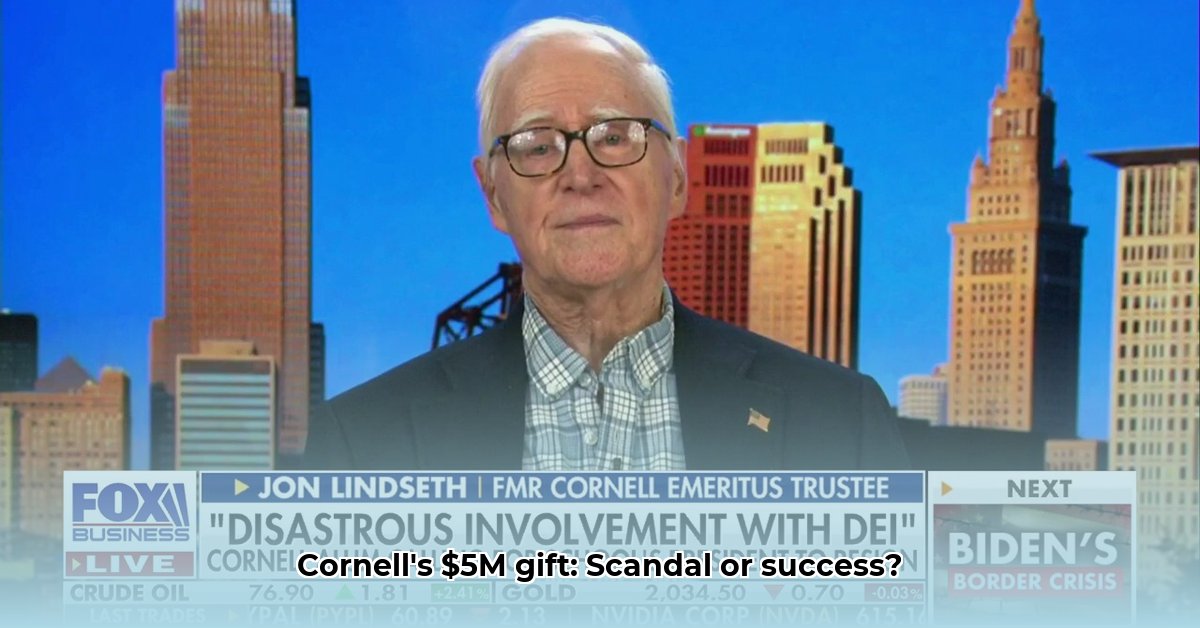
The recent withdrawal of significant funding from Cornell University by Jon Lindseth has ignited a crucial debate within higher education. While the precise extent of Lindseth's net worth remains undisclosed, his substantial past contributions and the public nature of his departure highlight a growing tension between wealthy benefactors and institutions' commitment to diversity, equity, and inclusion (DEI) initiatives. This case serves as a compelling case study examining the complex relationship between philanthropic giving and institutional autonomy.
Lindseth's Background and Philanthropy
Jon Lindseth's history with Cornell includes substantial philanthropic support, although the specific figures remain private. His past contributions, however, are widely acknowledged as significant within the university's history. This makes his current actions all the more noteworthy—a high-profile instance of a significant donor withdrawing support based on professed disagreements with the university's DEI approach. Understanding the scale of his previous giving provides crucial context for analyzing the ramifications of his decision. The situation raises questions about the transparency and accountability required in university-donor relationships. How transparent should universities be about their DEI strategies and how might this transparency interact with donor expectations?
The Controversy
Lindseth's withdrawal was not a silent affair; it was accompanied by public statements expressing his disapproval of Cornell's DEI initiatives. This public break created a ripple effect extending far beyond Cornell's campus, sparking widespread discussion about the delicate balance between donor influence and institutional independence in higher education. His actions raise questions about the potential chilling effect of donor pressure on universities' ability to pursue their chosen missions. What is the appropriate balance between fulfilling donor expectations and maintaining institutional integrity and autonomy in pursuit of mission-driven goals?
Cornell's Response
Cornell's response to Lindseth's withdrawal has been characterized by measured statements affirming the university's commitment to DEI while acknowledging the importance of maintaining positive relationships with its benefactors. However, the university’s response strategy and the long-term impact of this controversy remain to be seen. How will other universities respond to similar potential challenges, and how might this situation influence future fundraising efforts?
Analysis and Implications
This situation represents a significant turning point in discussions of higher education philanthropy. The Integrated Analysis section of the original article highlights several key risks facing universities, including the potential loss of future funding, reputational damage, and increased campus polarization. The Actionable Intelligence section underscores the crucial need for proactive risk assessment, transparent communication, and data-driven demonstration of DEI initiatives' effectiveness. The case exposes a fundamental challenge: how to balance the crucial need for financial support from private donors with institutional commitments to DEI principles. What is the appropriate level of communication and compromise to navigate these conflicting pressures? Are other universities prepared for similar difficulties, and what adjustments might they make in their policies and practices?
Conclusion
The Jon Lindseth case at Cornell constitutes a pivotal moment in the ongoing conversation surrounding higher education philanthropy. While the specifics of Lindseth’s net worth remain private, the ramifications of his decision are undeniable. Universities must carefully consider the implications of this event and develop strategies to navigate the complexities of the evolving relationship between institutional mission and donor expectations. Strengthening communication channels, actively engaging in dialogues, and demonstrating the tangible impacts of DEI initiatives are essential steps to mitigate future conflicts and ensure the long-term financial stability and integrity of higher education institutions. How can higher education institutions adjust their fundraising strategies to minimize the likelihood of future conflicts of this nature? This case compels deeper reflection on the broader trends influencing higher education funding.